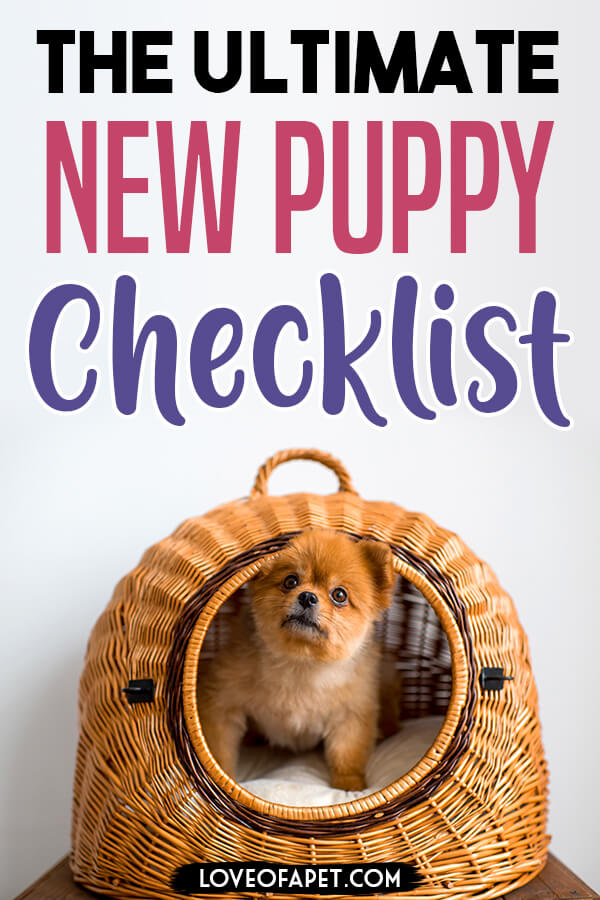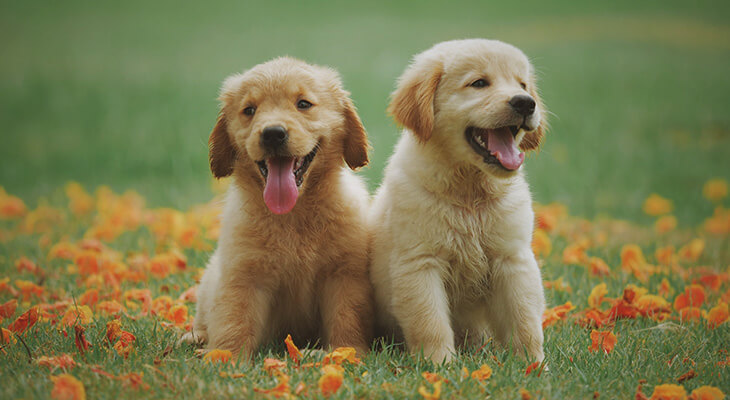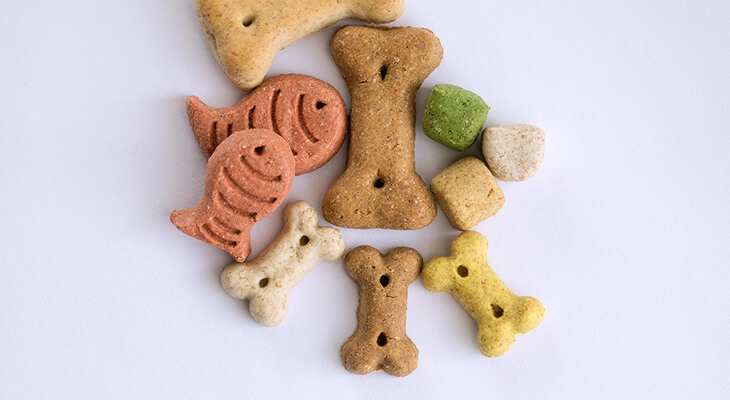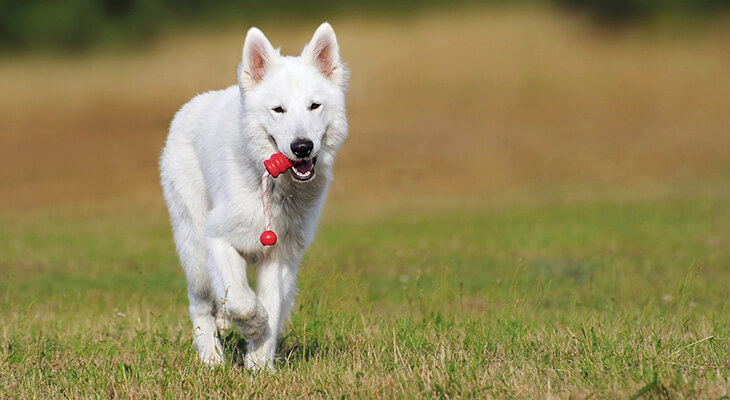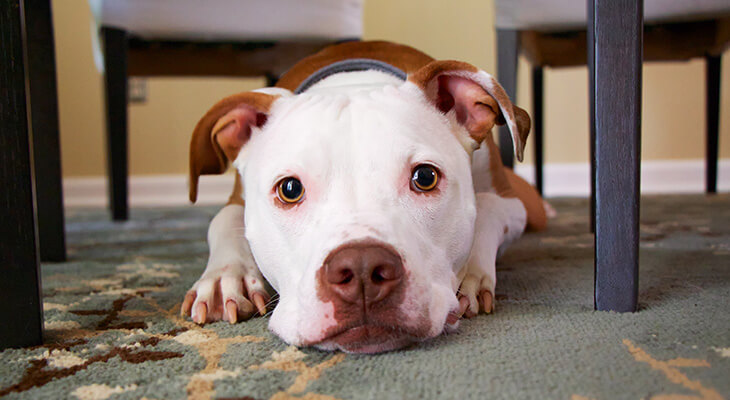Puppy— frantically wagging tail, soft belly, and that cute, pinkish tongue!
I mean, what’s better than a puppy, right?
And if you have made a wonderful decision of taking one home, then I congratulate you! You’ll soon understand what I’m talking about! And you’re life will be filled with love and lots of belly rubs!
Adorable as they are, these tiny furry balls of happiness will need several tools and items in order to keep them happy, safe and energetic as they should be.
So, here is a new puppy checklist to help you succeed in taking care of your newfound puppy love!
Contents
What Do You Need for a New Puppy
1. Food
Pups eat. A lot!
Pups will need to eat at least 3 – 4 times a day. Then, you can cut back to only 2 feedings when they’re 6 – 12 months old.
Since they are still growing, they will need high-quality food that is specially formulated for puppies having all the right balance of nutrients and energy.
You will want to figure out what food they’re currently eating, so check with your puppy’s breeder or the rescue or shelter service where you took him.
Get that food to start if you can since it will be easier on their tummies. After a little while, you can decide to switch their food, but still blending it with their previous food for an easy introduction and prevent upsetting their stomachs.
2. Treats
In addition to the usual puppy food, puppies also love those occasional treats. Treats are a helpful and effective tool when training your new fluffy buddy— from rewarding your pup and making learning new things extra fun.
Since you will probably want to train your pup, then you’ll give him a lot of treats. So, make sure to buy the low-calorie varieties to prevent your pup from getting overweight.
3. Food and Water Bowl
Now, you can’t just throw your pup’s food on the ground or feed him on your own bowl or make him lick on your glass. You’ll need designated bowls for that.
Now, this may seem like a simple thing. However, puppies will need special food and water bowls because of their size, eating style or some with medical needs.
For convenience, pick a food and water bowl with a rubber base. This should prevent flipping, moving, as well as reducing skidding, noise, and scratches on your hardwood floor.
In addition, the material should also be taken into account. Ditch the cheap plastic food bowl known to harbor contaminants and cause skin contact dermatitis on the dog’s chin and face. Not only that, but your pup might also chew on the plastic bowl, creating ridges that can hold and hide bacteria.
So far, stainless steel bowls are your best choice since it is easy to clean and is heavier, making it less likely to be flipped over.
4. Containment
Gates, crates, playpens! Your options are truly endless. Although you probably want your pup to roam freely around the house, keeping him contained is crucial to keeping him as well as your belongings safe.
Due to their curious nature, puppies can get into all kinds of trouble. And even if you puppy-proof your home, it is still crucial that you contain him when you can’t supervise him.
Crates
Dogs are den creatures. They love the security and comfort offered by a sung space they can call their own. And a crate will have the three necessary walls and a front gate that gives your pup view of the outside.
Just make sure to find the right size of crate for your pup. Too much room and your pup can have accidents inside. Too small and your pup won’t be comfortable moving around. The right size should give your pup enough room to stand up, lie down and turn around whenever they want.
Gates
Another useful tool to contain your pup when you’re busy with other things, puppy gates are available in all kinds of models. Some can be pressure mount or screwed into doorways while some can be free-standing.
Playpens
Puppy playpens allow your pup to play and roam around in a specific area, keeping him contained and safe where you can actually see him. Playpens are a nice choice if you do not have an area or room that you can gate off.
5. Bedding
What do I need a bedding for? He sleeps wherever he wants to!
While it is true that pups do play so hard and tend to just pass out anywhere, you will want to make sure that he has his own bed. There are various options that you can choose from based on your preference and your dog’s size.
The problem is that puppies are notorious for chewing and tearing things up, and their own bedding is most often the poor victim. So, if you got a bed-destroyer pup, then you can consider chew-proof bedding or simply go with a crate mat, just until he grows up and becomes more mature.
6. Toys
Puppies are tiny balls of overflowing energy. And while you simply can’t keep up with your pups because of work, fortunately, there’s no shortage of toy options out there.
You can buy a few different types of toys from tug toys, fetch toys, training toys, stimulating toys and more. However, the most suitable toy you need to get for your growing pup will be chew toys.
Puppies start growing their teeth at 12 – 14 weeks. This painful and uncomfortable process can be relieved by chewing on things. To protect your pup, your furniture, and your limbs, make sure that you give your pup enough chew toys.
Just make to choose appropriately-sized toys to prevent accidents like choking and always supervise them when they play.
7. Grooming Equipment
He may be lovable and charming, but you simply don’t want him by your side if he smells bad with muddy paws!
Thus, it is a great idea to train your pup to groom as early as possible. So, make sure to add some pup-appropriate grooming supplies on your puppy gear shopping essentials.
Dog Shampoo
When your pup had a great time outside, digging onto your precious flower bed, you’ll probably be frustrated with all the muddy pawprints they leave behind on your floors, carpets, and even furniture.
When that comes, your pup will need to take a bath, regardless of how he hates the water. Never use your shampoo on your pup since they tend to be too harsh on their skin. Instead, choose a shampoo specially made for pups and dogs.
Comb and Brush
Regular brushing with a dog comb or brush can help your furry biddy be comfortable being touched all over his body, while also getting rid of debris and dirt trapped in his coat. In addition, regular combing also helps prevent matt or coat problems for the long-haired breeds.
Nail clippers
Nail clippers should help prevent wounds and cuts on your pup’s skin whenever he scratches too much. It should also prevent painful problems such as ingrown. If you have not clipped a dog’s nails before, ask your vet.
Toothpaste and Toothbrush
Did you know that 80% of canines ages three and above have periodontal disease? Thus, good oral hygiene needs to start early. You need to train your pup to have his teeth brushed so that he can enjoy it over time.
Plus, the fact that dog toothpaste comes in many yummy flavors that your pup will surely like, such as vanilla, peanut butter, and chicken.
8. Collar and Leash
A collar is also essential.
But, how do you know if it fits your pup?
Veterinarian recommends that the right collar size means that you can comfortably slip two fingers underneath. Although it may seem tight, this should keep your slippery pup from sliding out. The style and colors, on the other hand, will be up to you.
For the leash, you can get a standard leash or a retractable one. Retractable leashes are best for adaptability. However, standard leashes are better for control and training. If you have a destroyer and chewer, then you can always go with the thicker ones.
9. ID Tags and Updated Microchip
Dog ID tags are essential that help other people identify your pup in case they make a naughty escape. So, make sure that your pup is properly registered where you live.
Some breeders and rescues provide puppies that are already microchipped. Just make sure that the registration has been moved to you and that all data is correct, particularly your address and phone number.
If you have a puppy that is not microchipped yet, talk to your vet about getting him one.
10. Cleaning Supplies
Regardless of how adorable they can be, puppies are messy creatures. And while they tend to have accidents, you can help keep your home and yard clean with a few tools.
Poop bags
For starter, you will need to stock up on poop bags. And you can choose from unscented, scented, biodegradable and a variety of designs and colors. Regardless of what you choose, just make sure that you buy lots of them.
Enzyme Cleaners
Even the best-trained puppies can have accidents at some point. And these accidents need to be cleaned within seconds with the best enzyme cleaners.
The difference between your regular household sprays and enzyme cleaners is that the latter will eliminate odors which only your pup can smell. This should help reduce any noticeable reminder that he has gone potty in that particular spot.
In addition, try to avoid cleaners with ammonia since it smells just like their pee and your pup will surely love going there to do their thing again.
Bitter Apple Spray
Even if you puppy-proof your home, there are still a few items like your furniture that you can hide from your pups. Well, a bitter apple spray can save the day and can be applied to most household items.
Although you can’t smell it, bitter apple spray is quite unappealing to dogs, keeping their curious, gnawing mouth away or preventing them from marking your furniture as their own.
